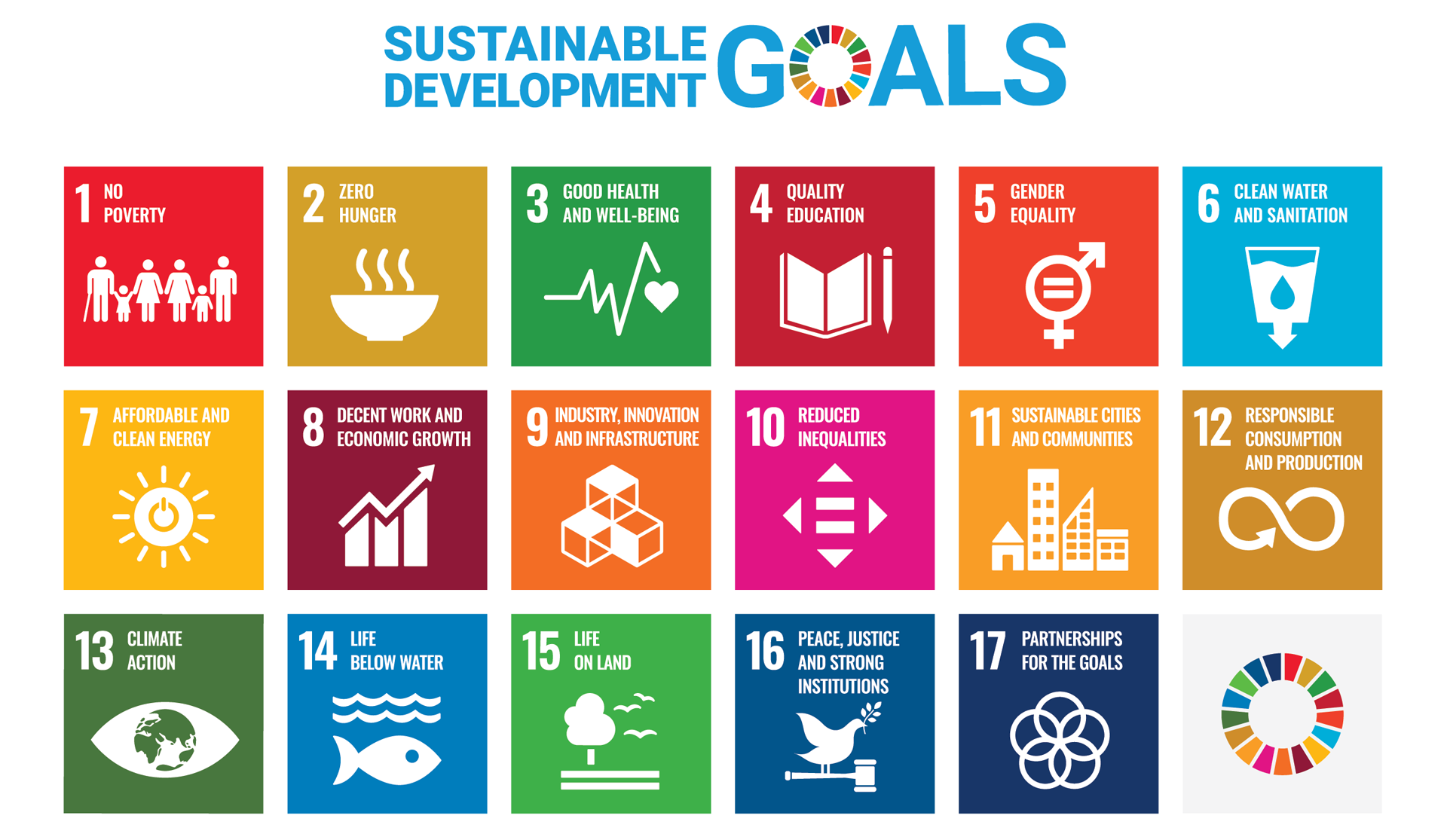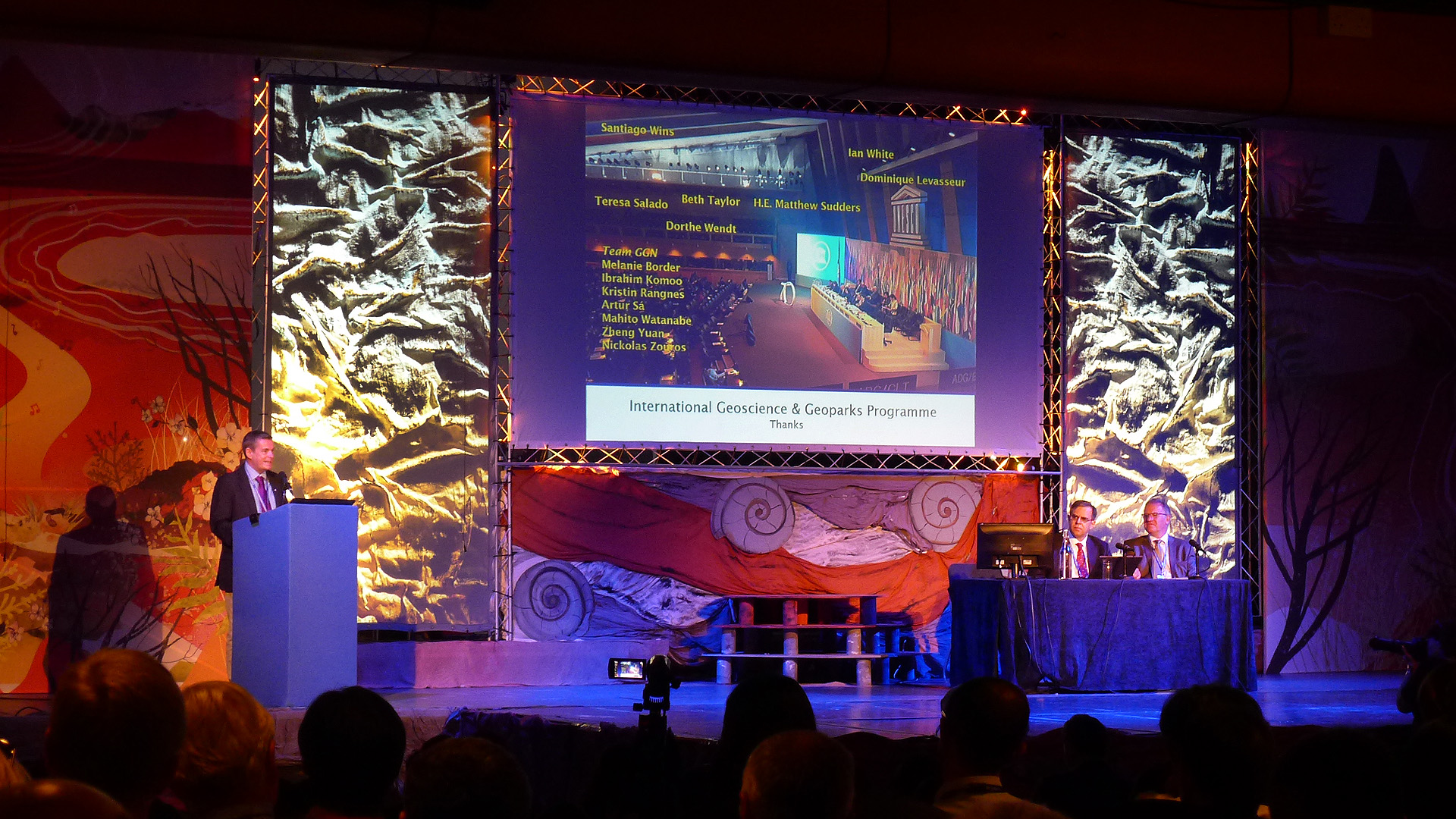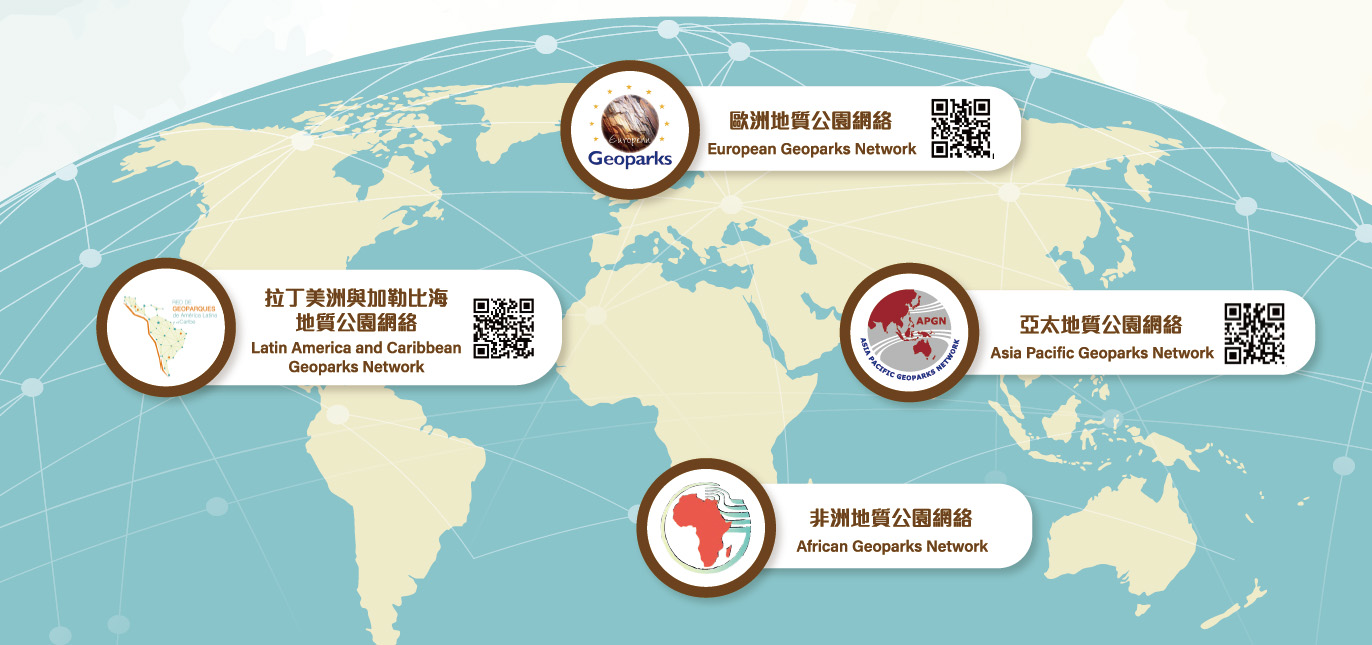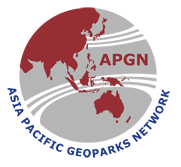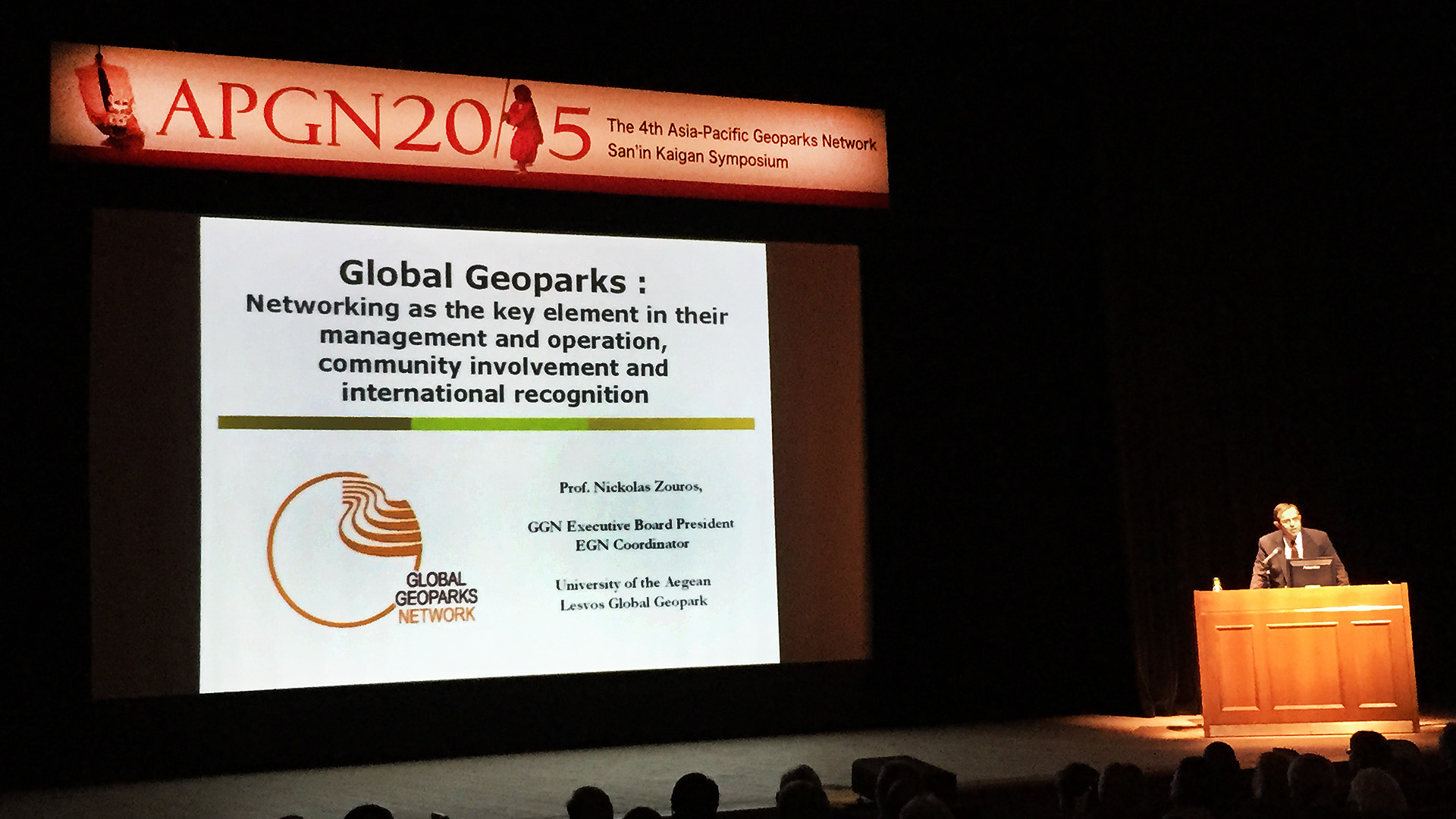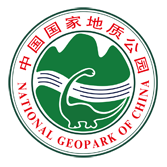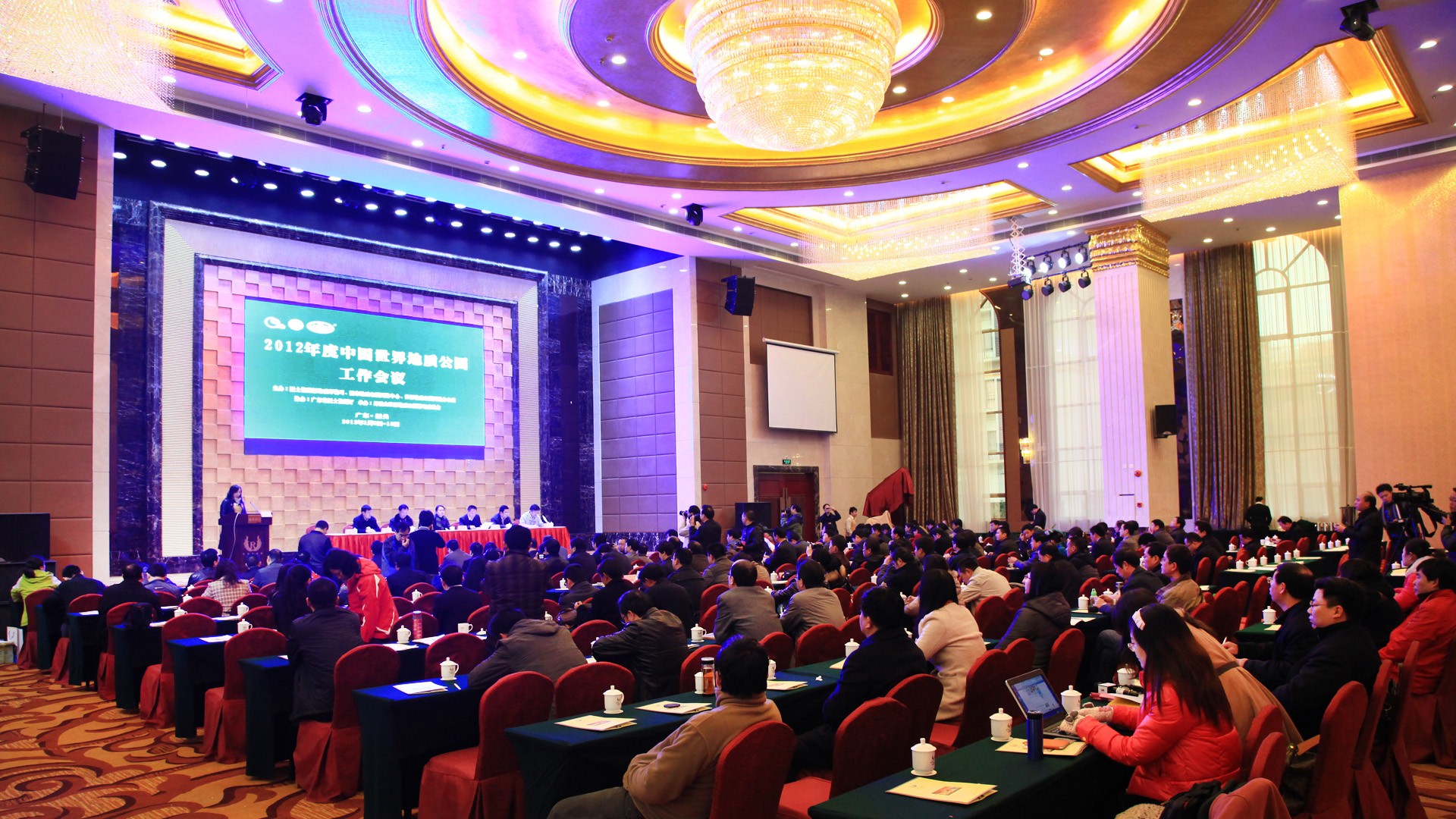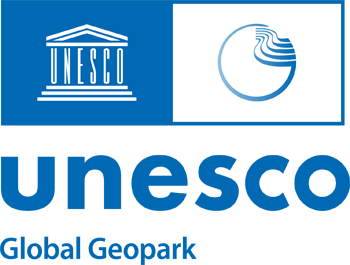
UNESCO Global Geoparks
UNESCO’s work with geoparks began in 2001. In 2004, 17 European and 8 Chinese geoparks came together at UNESCO headquarters in Paris to form the Global Geoparks Network (GGN) where national geological heritage initiatives contribute to and benefit from their membership of a global network of exchange and cooperation.
On 17 November 2015, the 195 Member States of UNESCO ratified the creation of a new label, the UNESCO Global Geoparks, during the 38th General Conference of the Organisation. This expresses governmental recognition of the importance of managing outstanding geological sites and landscapes in a holistic manner.
The Organisation supports Member States’ efforts to establish UNESCO Global Geoparks all around the world, in close collaboration with the Global Geoparks Network.

![]() What is a Geopark?
What is a Geopark?
A geopark is a nationally protected area containing a number of geological heritage sites of particular importance, rarity or aesthetic appeal. These Earth heritage sites are part of an integrated concept of protection, education and sustainable development.
![]() What is a UNESCO Global
Geopark?
What is a UNESCO Global
Geopark?
A UNESCO Global Geopark uses its geological heritage, in connection with other aspects of an area’s natural and cultural heritage, to enhance awareness and understanding of key issues facing society, such as using our earth’s resources sustainably, mitigating the effects of climate change and reducing natural disasters-related risks. By raising awareness of the importance of the area’s geological heritage in history and society today, a UNESCO Global Geopark give local people a sense of pride in their region and strengthen their identification with the area.
![]() How does a Geopark achieve its goals?
How does a Geopark achieve its goals?
A GEOPARK achieves its goals through a three-pronged approach:
CONSERVATION: A GEOPARK seeks to conserve significant geological features, and explore and demonstrate methods for excellence in conservation. The management authority of each GEOPARK ensures adequate protection measures in consultation with collaborating universities, geological surveys or relevant statutory bodies in accordance with local traditions and legislative obligations.
EDUCATION: A GEOPARK organizes activities and provides logistic support to communicate geoscientific knowledge and environmental concepts to the public. This is accomplished through protected and interpreted geosites, museums, information centres, trails, guided tours, school class excursions, popular literature, maps, educational materials and displays, seminars and so on. A GEOPARK also fosters scientific research and cooperation with universities and research institutes, stimulating the dialogue between the geosciences and local populations.
GEOTOURISM: A GEOPARK stimulates economic activity and sustainable development through geotourism. By attracting increasing numbers of visitors, a GEOPARK stimulates local socio-economic development through the promotion of a quality label linked with the local natural heritage. It encourages the creation of local enterprises and cottage industries involved in geotourism and geoproducts.
 What are Sustainable
Development Goals (SDGs)?
What are Sustainable
Development Goals (SDGs)?
The Sustainable Development Goals, also known as the Global Goals, were adopted by all United Nations Member States in 2015 as a universal call to action to end poverty, protect the planet and ensure that all people enjoy peace and prosperity by 2030.
The 17 SDGs are integrated—that is, they recognize that action in one area will affect outcomes in others, and that development must balance social, economic and environmental sustainability.
Through the pledge to Leave No One Behind, countries have committed to fast-track progress for those furthest behind first. That is why the SDGs are designed to bring the world to several life-changing ‘zeros’, including zero poverty, hunger, AIDS and discrimination against women and girls.
Everyone is needed to reach these ambitious targets. The creativity, knowhow, technology and financial resources from all of society is necessary to achieve the SDGs in every context.
